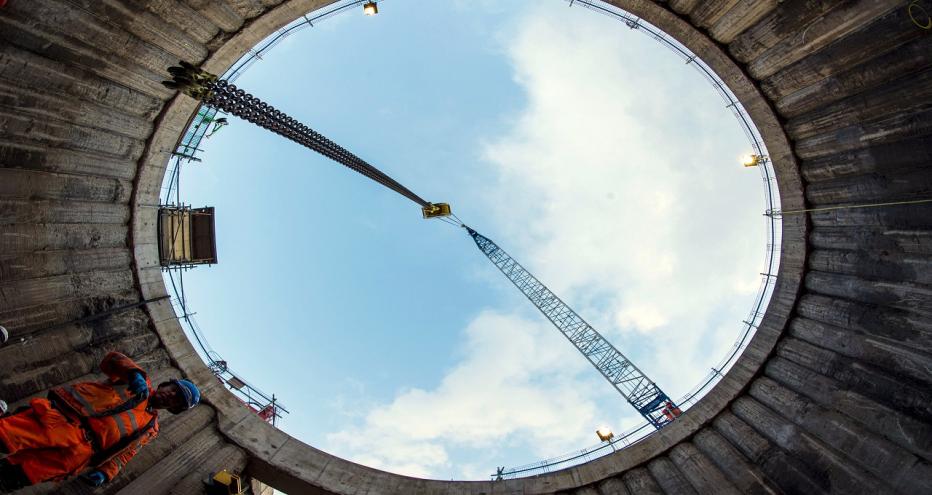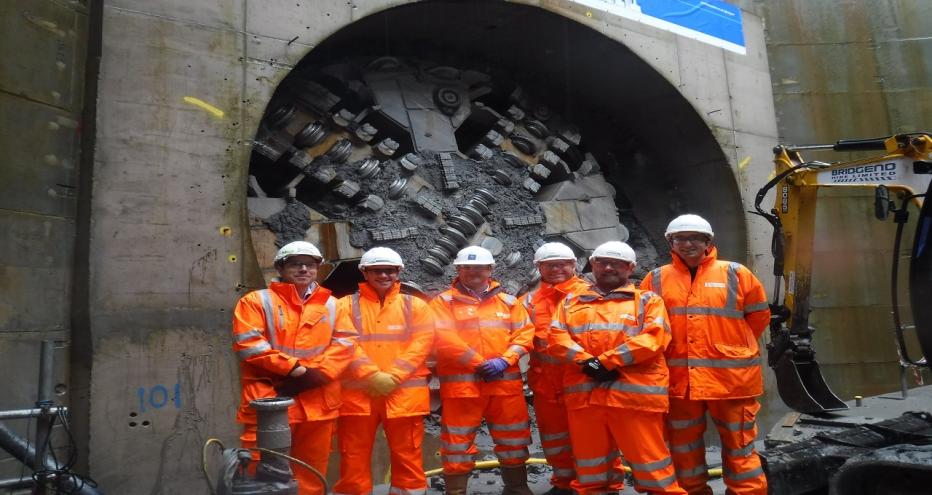
Image courtesy of Scottish Water. © SNS
When a month’s worth of rain fell over Glasgow on a June afternoon in 2002, the city’s sewer system just couldn’t keep up, leaving portions of the city under several feet of water.
Completed in 2018, the Shieldhall Tunnel is the biggest wastewater tunnel in Scotland, and a main component of Scottish Water’s program, conceived as an answer to the 2002 flooding, to transform how it manages rainfall, protects water quality and prevents flooding from stormwater overflows.
Jacobs served as a strategic advisor to Scottish Water on the tunnel.
-
90 K
cubic meters of extra stormwater storage
-
90 %
cubic meters of extra stormwater storage
-
36
Olympic-sized pools worth of stormwater kept from flooding the streets
-
500 K
tonnes of earth, stone, clay and other aggregates excavated– 90 percent of which are being recycled
One of the most significant Scottish projects since the Victorian era
Big enough to fit a double-decker bus inside, Shieldhall Tunnel is one of the most significant infrastructure projects in Glasgow since the Victorian era and can provide 90,000 cubic meters of extra stormwater storage, helping contain an estimated 90 percent of combined sewer overflows following storms.
Appointed by Scottish Water in 2012 to advise on various tunnel options, Jacobs prepared the reference design, carried out site investigations and assisted with tender preparation and evaluations. Throughout the project, Jacobs provided technical assistance and a site team to supervise the tunnelling works construction.
A tunnel boring machine, nicknamed Daisy the Driller, spent 15 months creating the 3.1-mile-long tunnel beneath southern Glasgow, excavating more than 500,000 tonnes of earth, stone, clay and other aggregates – 90 percent of which are being recycled. While tunnelling, Daisy installed more than 3,200 concrete rings (6 segments each weighing over 2 tonnes) to form the tunnel, advancing through the ground at 2 centimetres per minute.
The challenging geology conditions ranged from soft clay, glacial till to hard sandstone and mud stone. The cover to the crown of Daisy the Driller was less than 1 diameter in places, making control of face pressure critical. The tunnelling team successfully overcame obstacles, particularly where the alignment crossed beneath Paisley Canal railway line and cover was reduced to less than 1 diameter with soft clay.
The ground beneath Glasgow is riddled with old coal mine workings, some of which are unrecorded. Before any tunnelling could start, the team had to grout infill in four areas along the alignment, a challenging undertaking. Grouting not only allowed Daisy's safe passage through old mining areas, but also ensured the tunnel's long-term stability. The team used approximately 15,000 tonnes of grout to fill the voids left behind by these workings.

“The Shieldhall Tunnel is an extraordinary feat of modern engineering, which builds on the endeavours of those pioneers who sought to improve Glasgow's waste water network more than a century ago. Providing an excellent, effective waste water network which serves our growing communities is vital to the city's infrastructure and environment, now and for future generations.”












































